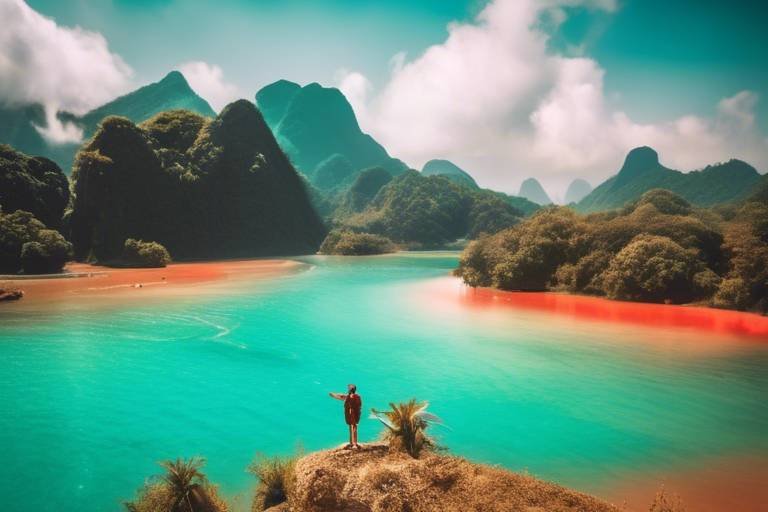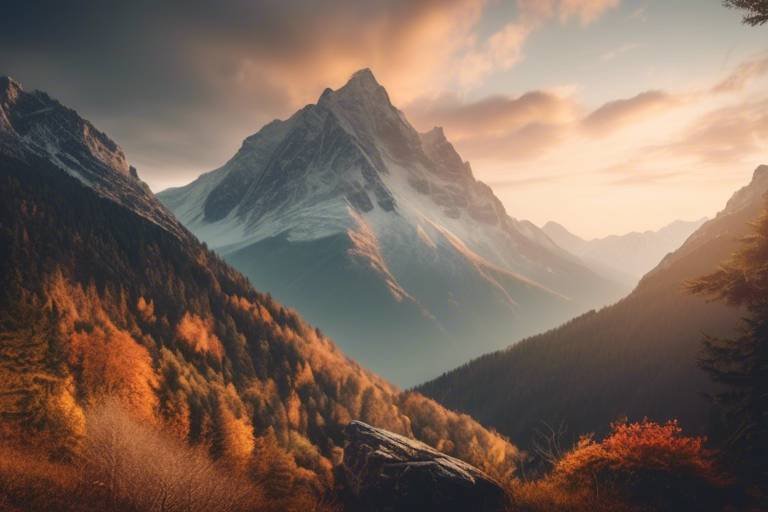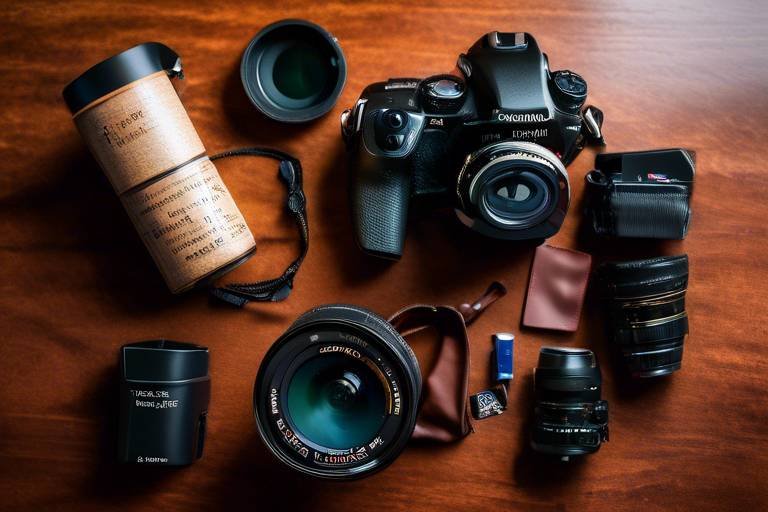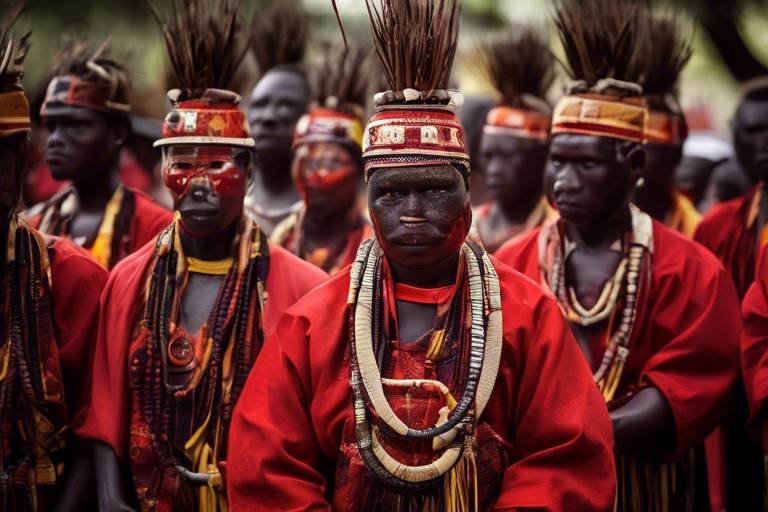How to Photograph Sunsets and Sunrises in Different Locations
Are you ready to embark on a journey of capturing the breathtaking beauty of sunsets and sunrises in various locations around the globe? As a photographer, these magical moments offer a canvas of colors and light that can elevate your images to new heights. Let's dive into the tips and techniques that will help you master the art of photographing sunsets and sunrises in different locations.

Understanding Lighting Conditions
When it comes to capturing stunning sunset and sunrise images, understanding lighting conditions is crucial. The moments around sunrise and sunset offer unique lighting that can greatly enhance the mood and atmosphere of your photographs. At sunrise, the light is soft and golden, casting long shadows and creating a peaceful ambiance. On the other hand, sunset light is warm and vibrant, painting the sky with a myriad of colors.
One key factor to consider when photographing sunsets and sunrises is the direction of light. The angle at which the light hits your subject can dramatically affect the overall look of your image. Side lighting can create depth and texture, while backlighting can produce striking silhouettes. Understanding how different lighting angles interact with your surroundings can help you compose more visually compelling shots.
Additionally, the quality of light changes rapidly during sunrise and sunset, requiring you to adapt quickly to capture the perfect moment. As the sun rises or sets, the colors in the sky evolve, creating a dynamic and ever-changing scene. This shifting light presents a wonderful opportunity to experiment with different settings on your camera and explore the creative possibilities of each moment.
To make the most of these unique lighting conditions, consider the time of day and the weather forecast. Clear skies can result in vibrant and colorful sunsets, while clouds can diffuse the light and create a more subtle palette. Embrace the unpredictability of nature and use it to your advantage, seeking out interesting compositions that play with light and shadow.

Choosing the Right Location
When it comes to capturing stunning sunset and sunrise images, choosing the right location plays a crucial role in the success of your photographs. The perfect spot can make all the difference in creating visually appealing and memorable shots. Consider factors such as composition, foreground elements, and natural features when selecting a location for your sunrise or sunset photography session.
Think about the overall composition of your image and how different elements within the scene interact with each other. The rule of thirds can be particularly helpful in creating a balanced and visually pleasing composition. By placing key elements of the sunset or sunrise in one-third of the frame, you can add interest and depth to your photos.
Additionally, consider incorporating leading lines into your composition to guide the viewer's eye towards the main focal point of the image. Leading lines can be natural elements like roads or rivers, or man-made structures such as fences or buildings. These lines help create a sense of movement and flow within the photograph.
When choosing a location for your sunset or sunrise shoot, pay attention to the natural features present in the environment. Whether it's a beach with crashing waves, a mountain peak with sweeping views, or a desert with vast open spaces, the surroundings can add depth and interest to your images. Look for unique elements that can enhance the overall mood and atmosphere of your photos.
Remember that the location you choose should complement the colors and lighting conditions of the sunrise or sunset. Different locations can offer varying perspectives and backdrops for your images, so explore a variety of spots to find the perfect setting for your photography. Experiment with different angles and viewpoints to capture the beauty of the sun as it rises or sets in the sky.

Composition and Framing
When it comes to capturing stunning sunset and sunrise images, composition and framing play a crucial role in creating visually appealing photographs. The way you frame your shots can make a significant difference in the overall impact of your images. By following certain composition techniques, you can elevate your sunset and sunrise photos from ordinary to extraordinary.
One essential aspect of composition is the rule of thirds, where you divide your frame into a 3x3 grid and place key elements along the gridlines or at the intersection points. This technique helps create a balanced and visually pleasing composition that draws the viewer's eye into the scene.
Another effective method for enhancing your sunset and sunrise shots is to incorporate leading lines. These are lines within the image that lead the viewer's eye towards the main subject or focal point, adding depth and visual interest to the photograph. Whether it's a winding path, a shoreline, or a row of trees, leading lines can guide the viewer through the scene and create a sense of movement.
To add depth and dimension to your sunset and sunrise images, consider including foreground elements. By including objects in the foreground of your shot, such as rocks, flowers, or silhouetted figures, you can create a sense of scale and perspective, making the scene more immersive and engaging for the viewer.
Experimenting with different perspectives can also help you create unique and captivating compositions. Instead of always shooting at eye level, try getting low to the ground or finding a higher vantage point to capture sunsets and sunrises from a fresh angle. Changing your perspective can add a dynamic element to your photos and make them stand out from the crowd.
Remember, composition and framing are not just about following strict rules but also about unleashing your creativity and experimenting with different techniques. Don't be afraid to try new angles, explore unconventional framing options, and push the boundaries of traditional composition. The beauty of sunrise and sunset photography lies in its ability to evoke emotion and create a connection with the viewer, so let your imagination soar as you frame your next breathtaking shot.

Utilizing Filters and Equipment
When it comes to capturing stunning sunrise and sunset images, utilizing the right filters and equipment can make a significant difference in the quality of your photos. Filters such as ND filters and polarizers play a crucial role in enhancing the colors and reducing glare in your sunrise and sunset shots. ND filters help in controlling the amount of light entering the camera, allowing you to achieve longer exposures and capture the motion of elements like flowing water or moving clouds with a silky effect.
Additionally, polarizing filters are essential for reducing reflections and enhancing the saturation of colors in your images, especially when shooting during bright daylight or near water bodies. These filters can make the sky appear deeper blue and the clouds more defined, adding a dynamic element to your sunrise and sunset photographs.
When it comes to equipment, having a sturdy tripod is indispensable for shooting during low light conditions at sunrise and sunset. A tripod ensures stability and reduces the risk of camera shake, allowing you to capture sharp and clear images even with longer exposure times. Investing in a remote shutter release can also be beneficial to minimize any vibrations when triggering the camera.
Moreover, carrying a variety of lenses in your camera bag can provide you with different perspectives and focal lengths to experiment with during sunrise and sunset shoots. Wide-angle lenses are ideal for capturing expansive landscapes and dramatic skies, while telephoto lenses can help you isolate specific elements in the scene and create compelling compositions.
Lastly, don't forget to pack essential accessories like lens cloths to keep your gear clean, extra batteries to avoid running out of power during extended shoots, and a lens hood to prevent lens flare and protect your lens from stray light. Being well-prepared with the right filters and equipment will enable you to elevate your sunrise and sunset photography to the next level.
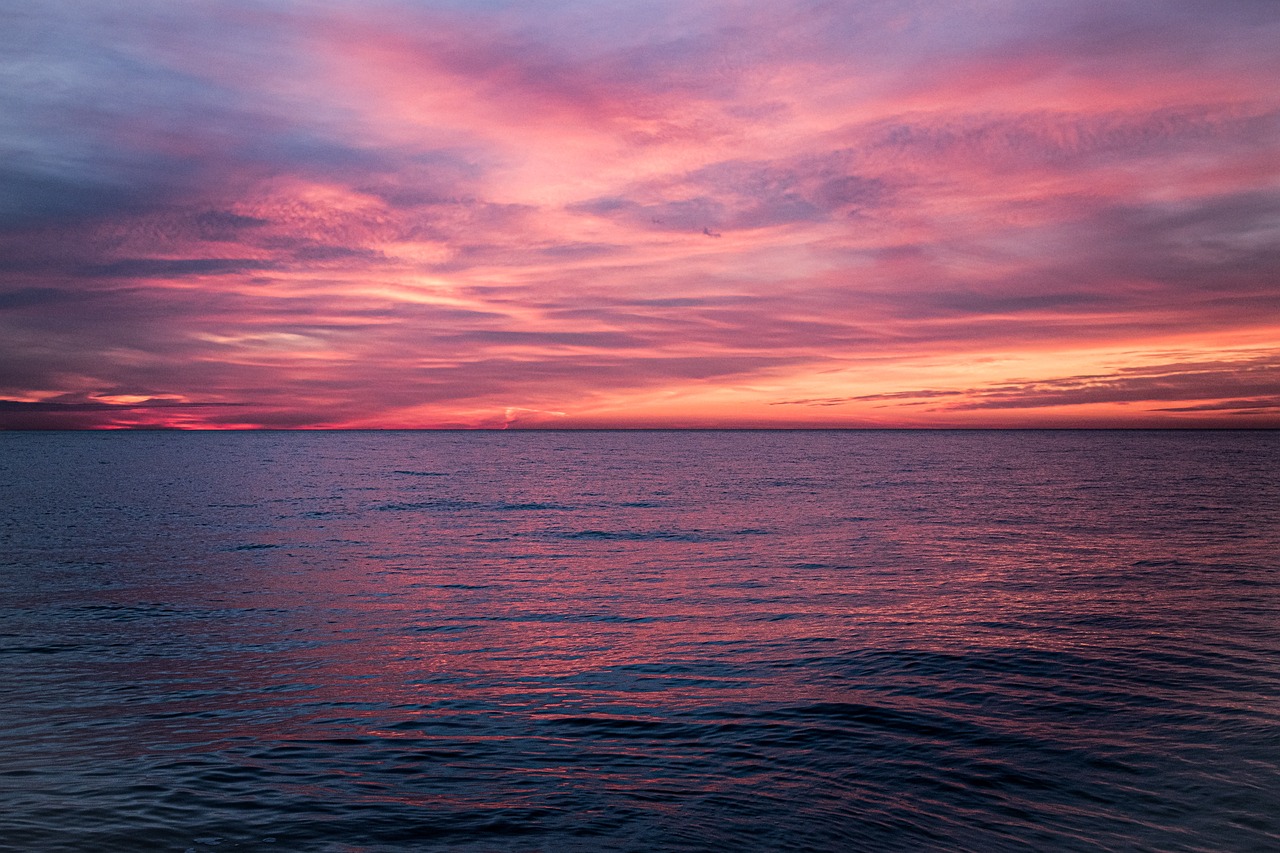
Editing and Post-Processing Techniques
Editing and post-processing are crucial steps in enhancing the beauty and impact of your sunrise and sunset images. Once you have captured the perfect shot, it's time to bring out the full potential of your photographs through editing software and techniques.
One common technique used in post-processing sunrise and sunset photos is adjusting the colors to make them more vibrant and appealing. By tweaking the saturation, contrast, and white balance, you can create a more stunning and eye-catching image that truly captures the magic of the golden hour.
Another important aspect of post-processing is fine-tuning the exposure and shadows to bring out the details in both the highlights and shadows of your photograph. This ensures that your sunrise and sunset images have a balanced and dynamic look, with no areas that are too dark or too bright.
When it comes to editing software, popular choices among photographers include Adobe Lightroom and Photoshop. These tools offer a wide range of features and tools that allow you to make precise adjustments to your images, from basic color corrections to advanced retouching techniques.
One effective post-processing technique for sunrise and sunset photos is the use of gradient filters. These filters allow you to selectively adjust the exposure and color of specific areas in your image, such as the sky or the foreground, without affecting the entire photo.
Additionally, experimenting with different editing styles and presets can help you develop a signature look for your sunrise and sunset images. Whether you prefer a natural and realistic editing approach or a more dramatic and artistic style, finding a editing style that resonates with you can elevate your photography to the next level.
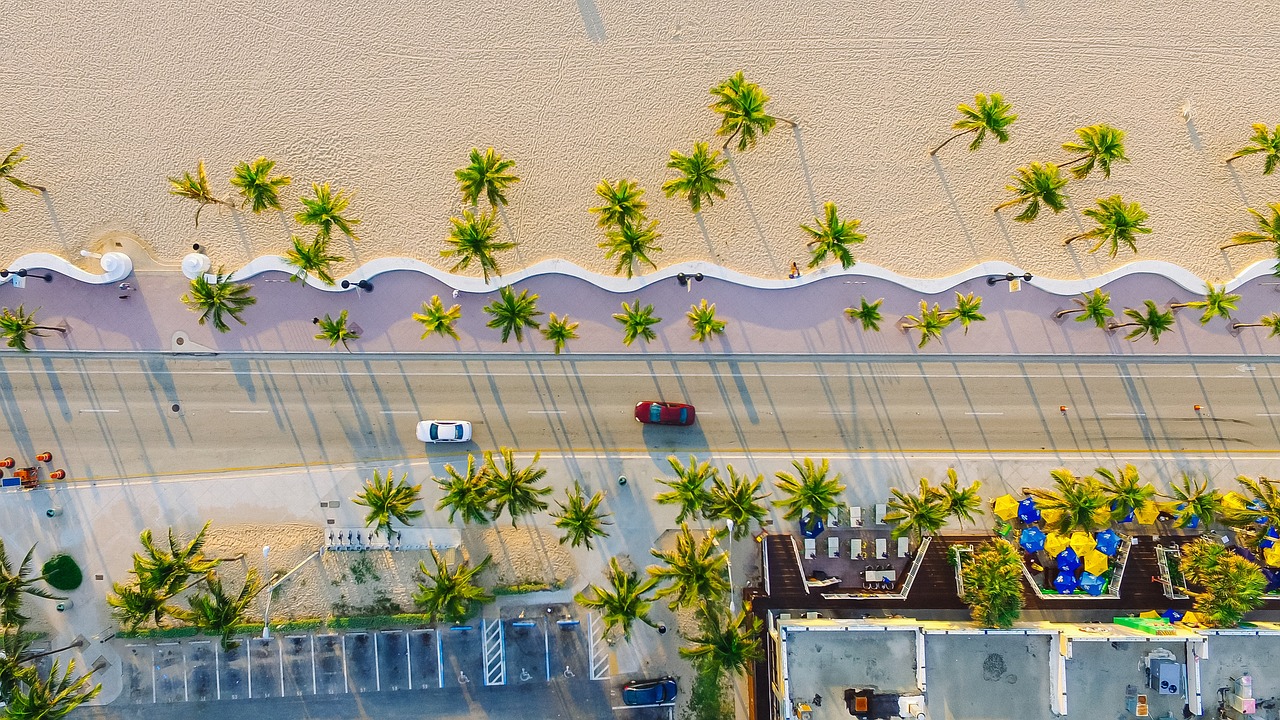
Capturing Unique Perspectives
When it comes to capturing stunning sunset and sunrise images, one of the keys to creating memorable photos is by capturing unique perspectives. By thinking outside the box and exploring creative techniques, you can elevate your sunrise and sunset shots to a whole new level.
One way to capture a unique perspective is by incorporating silhouette shots into your sunrise and sunset photography. Silhouettes can add a sense of mystery and drama to your images, creating striking contrasts between light and dark. Positioning your subject in front of the bright, colorful sky can result in captivating and visually appealing photos.
Another technique to consider is capturing reflections during sunrise and sunset. Whether it's a still body of water, a glassy surface, or even a puddle after rain, reflections can add depth and symmetry to your photos. By including reflections in your compositions, you can create visually dynamic and engaging images that stand out.
Long exposure techniques can also help you capture unique perspectives of sunsets and sunrises. By using a slow shutter speed, you can create dreamy, ethereal effects in your photos, such as smooth, flowing water or streaks of light across the sky. Experimenting with long exposures can result in mesmerizing and artistic images that showcase the passage of time during these magical moments.

Dealing with Weather Challenges
When it comes to photographing sunsets and sunrises, one of the biggest challenges that photographers often face is dealing with unpredictable weather conditions. Imagine setting up your camera, waiting for that perfect moment when the sun dips below the horizon, only to be greeted by dark clouds or sudden rain showers. It can be frustrating, but with the right approach, you can turn these weather challenges into opportunities for capturing unique and captivating images.
One of the key techniques for dealing with weather challenges during sunset and sunrise photography is to embrace the elements and use them to your advantage. Instead of seeing clouds as obstacles, think of them as dramatic elements that can add depth and interest to your photos. Rain can create beautiful reflections, while fog can add a sense of mystery and mood to your images. By adapting to the weather conditions and adjusting your shooting style, you can create stunning photos that stand out from the typical clear-sky sunset shots.
Additionally, it's essential to be prepared for any weather scenario when heading out to capture sunsets and sunrises. Always check the weather forecast beforehand and pack accordingly. Bring protective gear for yourself and your equipment, such as waterproof covers and lens cloths. Having a plan B location in mind in case the weather takes a turn for the worse can also save the day and ensure you don't miss out on a great photo opportunity.
Furthermore, don't be afraid to experiment with different settings and techniques when faced with challenging weather conditions. For example, shooting in black and white can create striking images on overcast days, emphasizing contrast and textures in the sky and landscape. Long exposure photography can also be a powerful tool for capturing the movement of clouds or raindrops, adding a dynamic element to your sunset and sunrise shots.
In conclusion, while weather challenges can test your patience and creativity as a photographer, they also present unique opportunities to create memorable and impactful sunset and sunrise images. By embracing the elements, being prepared, and experimenting with different techniques, you can elevate your photography skills and capture stunning photos regardless of the weather conditions.

Exploring Global Locations
When it comes to for capturing stunning sunset and sunrise images, the world offers a diverse range of landscapes and settings that can truly elevate your photography game. From the serene beaches of the Maldives to the majestic mountains of the Swiss Alps, each location presents a unique opportunity to witness the beauty of nature's daily spectacle.
One of the most popular destinations for sunset and sunrise photography is Santorini, Greece. The white-washed buildings against the backdrop of the deep blue Aegean Sea create a picturesque setting that is perfect for capturing vibrant skies as the sun dips below the horizon. The iconic windmills and cliffside views offer endless possibilities for creating breathtaking images.
For those looking for a more rugged and dramatic backdrop, Patagonia, Argentina, is a photographer's paradise. The jagged peaks of the Andes mountains, crystal-clear lakes, and expansive glaciers provide a stunning canvas for sunrise and sunset shots. The ever-changing weather conditions in this region can result in dynamic and atmospheric images that tell a compelling story.
Heading to the deserts of Namibia offers a completely different experience for capturing sunsets and sunrises. The vast sand dunes of Sossusvlei, especially during the golden hours, create a surreal and otherworldly landscape that is unlike anywhere else on earth. The interplay of light and shadows in the desert can lead to striking and ethereal photographs.
Urban cityscapes also provide fantastic opportunities for sunset and sunrise photography. New York City, with its iconic skyline and bustling streets, offers a dynamic backdrop for capturing the changing colors of the sky against the silhouette of skyscrapers. From the Brooklyn Bridge to the Empire State Building, there are endless possibilities for creating striking images in the city that never sleeps.
When it comes to exploring global locations for photographing sunsets and sunrises, the key is to find places that resonate with you personally and offer a unique perspective on nature's daily spectacle. Whether you prefer serene beach settings, rugged mountain landscapes, surreal desertscapes, or vibrant urban environments, there is a world of possibilities waiting to be captured through your lens.
Frequently Asked Questions
- What camera settings are ideal for capturing sunsets and sunrises?
When photographing sunsets and sunrises, it's essential to adjust your camera settings to make the most of the available light. Optimal settings typically include a low ISO to reduce noise, a narrow aperture for sharpness, and a slower shutter speed to capture the beautiful colors and soft light of these magical moments.
- Do I need special filters for sunrise and sunset photography?
While not mandatory, using filters like ND filters and polarizers can significantly enhance your sunrise and sunset photos. ND filters help control the amount of light entering the lens, allowing for longer exposures and smoother water effects, while polarizers reduce reflections and enhance colors in the sky.
- How can I find the best locations for photographing sunsets and sunrises?
Choosing the right location is crucial for capturing stunning sunset and sunrise images. Look for spots with interesting foreground elements, such as rocks or trees, and consider the direction of the light to create dynamic compositions. Researching potential locations beforehand and scouting during different times of the day can help you discover hidden gems for your shots.
- What post-processing techniques can I use to enhance my sunset and sunrise photos?
Editing software like Adobe Lightroom or Photoshop can be powerful tools for enhancing the colors, contrast, and overall look of your sunrise and sunset images. Techniques such as adjusting white balance, tweaking exposure, and fine-tuning colors can help bring out the beauty of these natural light scenes.







